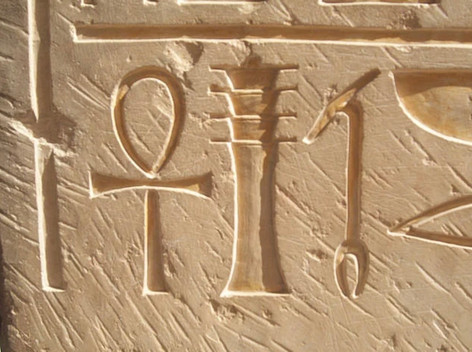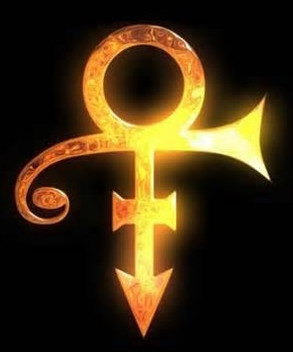BEST OF LUCK: TRADITIONAL TATTOO CHARMS
- Joshua Chatwin

- Mar 10
- 8 min read

With St. Patrick’s Day around the corner I started pondering the so-called luck of the Irish. But, let’s face it: Lemmy damned well knew best: most of us are born to lose. Hey, at least we have Motörhead to get us through. Outside of slapping Overkill on repeat as loud as possible, the next best way to counteract this universal idiom is to pick up an indelible Good Luck Charm—a bold tattoo imbued with luck and protection. Not only will you look cooler, but, you know, it couldn’t fucking hurt—well, maybe a little. But who knows, you could win the lottery or your rent might not go up! To get down to brass tacks, here’s a look at the history of good luck tattoos, some popular designs, and a break down the deeper meanings behind these iconic symbols. Spritz on some Cool Water cologne and let’s get Lucky!
Starting way, waaaayyy back to the civilization that still fascinates us today, ancient Egypt, and the ankh (☥), often referred to as the “key of life” or the “cross of life.” This is one of the most recognizable symbols from Egypt with its distinctive shape—a looped top with a T-shaped cross—a powerful symbol of life and eternal existence. Many believed it brought good luck and protection from evil, particularly in matters of health and longevity, the ankh carries deep spiritual and cultural meanings that have endured for thousands of years. Appearing frequently in Egyptian hieroglyphs and artwork dating back as far as 3000 BCE (holy shit!), the ankh is often held by gods and pharaohs, usually near the nose or mouth indicating the breath and force of life. The musical genius, Prince, must have been inspired by the ankh when he dropped his namesake for an unpronounceable ankh-like symbol thus becoming 'the Artist Formerly Known as Prince.'
Another popular symbol in Ancient Egypt was the scarab beetle, one of the region's most iconic symbols that represents good fortune, protection, and transformation. These small but mighty beetles were associated with powerful deities and the cycles of life, death, and rebirth.

Closely associated with Khepri, the Egyptian god of the rising sun, creation, and renewal. Khepri was often depicted with a scarab beetle as his head, symbolizing his role in pushing the sun across the sky each day, much like the beetle pushes its ball of dung (doo-doo). This daily act of renewal mirrored the cycle of life, death, and rebirth, giving the scarab a divine and powerful status. Often crafted into amulets, jewelry, and seals, sometimes inscribed with prayers or protective spells. These amulets were believed to protect the wearer from evil, bring good luck, and ensure a safe passage into the afterlife. The scarab’s role as a talisman for good fortune was so significant that it was often placed over the heart of mummies to guide the deceased’s soul during its journey through the underworld, making a scarab beetle tattoo a great way to hedge your bets on that long walk to the pearly gates.
Moving East to Japanese culture, art, and tattooing, we find that dragons hold a very special place. Symbolizing wisdom, strength, and of course, good fortune, Japanese dragons are benevolent beings associated with water, rain, and abundance, imbued with the power to protect, bring prosperity, and bestow blessings to those who honor them. This is in stark contrast to western medieval dragons which are depicted as menacing and dangerous creatures.
A few of the most famous Japanese dragons are:
Ryūjin (龍神): The dragon god of the sea, Ryūjin controls the tides and is associated with wisdom and power. He is often depicted with a jewel that controls the ebb and flow of the oceans.
Watatsumi (綿津見): Another sea dragon deity, Watatsumi is a guardian of sailors and fishermen, offering safe passage and good fortune at sea.
Fujin (風神): While not a dragon himself, Fujin, the god of wind, is often accompanied by dragon imagery in traditional Japanese art.
Their association with water and rain are deeply connected to good luck and abundance.

The closely related koi fish is another great choice for a good luck tattoo, symbolizing perseverance and the ability to overcome obstacles—needed qualities to attract good luck and for those facing challenges in life.
The connection between the koi fish and the dragon comes from an ancient Chinese legend known as “The Dragon’s Gate.”
According to the story, a large school of koi fish swam upstream in the Yellow River, showing great perseverance as they fought against strong currents and treacherous rapids. Their journey led them to a massive waterfall called the Dragon’s Gate, located at the top of a large mountain. Many weak-ass koi turned back, but a few courageous and determined fish continued to try leaping over the waterfall.
After a hundred years of relentless effort, one koi finally reached the top (there can be only one!). The gods were so impressed by its perseverance and determination that they transformed it into a powerful golden dragon as a reward.
This myth has become a metaphor for personal transformation and achieving one’s goals through hard work and persistence. The koi fish’s transformation into a dragon is particularly meaningful for those who want a tattoo to mark significant personal growth or the achievement of a life-changing milestone, tackling obstacles in the shit-storm of life, and as a way to attract positive energy and luck.


The Hamsa, also known as the Hand of Fatima (Islamic tradition) or Hand of Miriam (Jewish tradition), is believed to date back to ancient Mesopotamia (modern day Iraq) and Carthage (modern day Tunisia). Used as a universal symbol of protection against evil, and an amulet of good fortune, and blessings, the symbol spread throughout the Middle East and North Africa and ultimately became an integral part of Islamic, Jewish, and Christian traditions. Depicted as an open hand, often with an eye in the center. Commonly used in jewelry, art, and of course, tattoos, these are great designs to bring eternal luck when etched into the skin.
Moving from the East to the West ------ from its beginnings, western style tattooing has had ties to the concept of good luck symbols that were and are deeply rooted in maritime traditions. Sailors often believed tattoos could act as talismans for protection and good fortune during their dangerous voyages. Steeped in rich symbolism that blends maritime imagery with folklore and superstition, some of the most popular, timeless, and toughest tattoos you can gamble your hard-earned dollars on to bring you banging great luck include:
Images from Good Luck Vol 2. Henk Schiffmacher, Amsterdam Tattoo Museum
Swallows — Traditionally tattooed on sailors who had traveled over 5,000 nautical miles, guiding them home safely and providing hope and good luck on the treacherous seas. The swallow, often exchanged for the similar sparrow, returns to the same nest every year, much like a sailor returning home after a long voyage.
Nautical Stars — Resembling a compass rose, this tattoo is believed to help sailors find their way home and provide good fortune on their journey. A representation of the North Star, a common guidepost in the night sky.
Pin-Up Girls — A way for sailors to carry a reminder of loved ones and often symbols of good luck that will help guide the sailor home to their family. They also gave the often lonely sailor something of divine feminine beauty to look at and keep them company, keeping moral high.
Dice & Playing Card — These ramblin’ and gamblin’ designs represent taking chances, the risk-taking spirit, and hopes of winning big in gambling. Often paired with flames, skulls, and script that reads “lucky,” it’s a perfect symbol if Polymarket regularly takes your rent money.
Lucky Number 7 or 13 — Seven is the traditional lucky number, especially when shooting dice, but it goes deeper than that. Many cultures view the number seven as a lucky number due to it’s natural occurrence in nature—seven colors of the rainbow, seven planets in our solar system, the seven seas, and the overall prevalence of odd numbers, often seven, found in the natural world. In cognitive psychology it’s suggested that humans remember information better in groups of seven, and in every major religion seven holds spiritual significance—different levels of heaven, God resting on the seventh day of creation, and many more. Culturally we’ve even divided our weeks into seven days. Thirteen on the other hand is often seen as unlucky and it’s frequency in tattooing seems to be a tongue-in-cheek snubbing or reverse psychology of the bad luck blues, transforming bad luck good.
Other cultural influences also shaped western good luck charm tattoos. In particular, the Celtic traditions to which we owe the upcoming holiday provided heavy influence on tattooing. Over time these symbols evolved to mainstream popularity and became the benchmark for good luck tattoos:

Celtic Knot — Also known as endless knots and symbolizing eternity as they have no beginning or end. Believed to bring good fortune by promoting stability and harmony through life’s cycles of life, death, and rebirth.
Claddagh — Featuring two hands holding a hearth topped with a crown, this symbol represents love, friendship, and loyalty, all fading sentiments in the modern world. Thought to bring happiness, good fortune, and lasting relationships, what other good luck could you ask for?
Shamrock & Four-Leaf Clover — The holy grail of good luck tattoos, a shamrock is the symbol of Ireland, associated with St. Patrick and the Holy Trinity because of it’s three leaves. The even rarer version, the four-leaf clover, takes it a step further with each leaf representing faith, hope, love, and luck.
Horseshoe — Though not exclusively Celtic, the Celts did believe that an iron horseshoe could ward off evil spirits and bring good fortune. When tattooed with the open end facing up it collects and holds good luck, when facing down it spreads good fortune to those around. Often combined with four-leaf clovers and banners reading “good luck,” it’s hard to find a more classic totem of fortune to brand yourself with.
------------
For all of humanity’s roller coaster history we’ve searched for ways to increase our odds of success. At Fox & Sparrow Tattoo we say, what the hell—just get a tattoo for that! Unlike jewelry, you can’t lose it or pawn your totem of luck when you’re down and out. Just as a reaper tattoo wards off death, a horseshoe & clover or an ankh might just bring you the luck you need to navigate the game we call life. Stop in and let any of our artists create your personal indelible good luck charm—it’s probably the most proactive, grab-the-horse-by-the-reigns (or the devil by the balls) way you can manifest good vibes and luck!
Further Reading:
Joshua Chatwin, tattooing since 2010, owns Fox & Sparrow Tattoo with his wife and fellow tattooer, Samantha Chatwin. They live in and love Muncie Indiana with their daughter, Olivia, and two Papillon dogs, Honey Bear & Maple Wolf. Give him a good book, a good cigar, and about 30 in the sauna and he's happier than a pig in shit.





























Comments